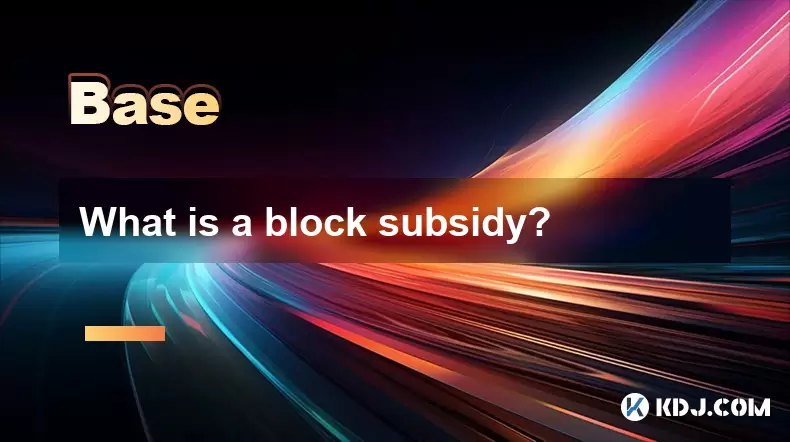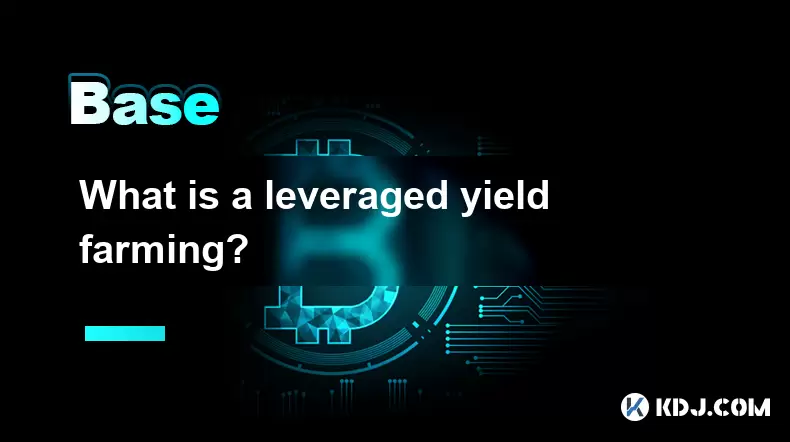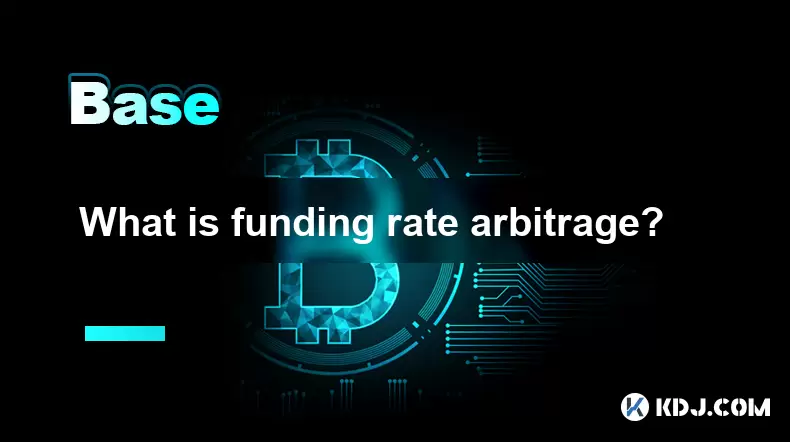-
 Bitcoin
Bitcoin $108,043.3894
-1.71% -
 Ethereum
Ethereum $2,519.1878
-3.09% -
 Tether USDt
Tether USDt $1.0004
-0.01% -
 XRP
XRP $2.2231
-2.72% -
 BNB
BNB $655.3607
-1.06% -
 Solana
Solana $148.3620
-2.84% -
 USDC
USDC $1.0000
0.00% -
 TRON
TRON $0.2838
-0.37% -
 Dogecoin
Dogecoin $0.1648
-4.79% -
 Cardano
Cardano $0.5759
-3.97% -
 Hyperliquid
Hyperliquid $38.4598
-5.19% -
 Sui
Sui $2.9005
-4.22% -
 Bitcoin Cash
Bitcoin Cash $481.1531
-3.80% -
 Chainlink
Chainlink $13.1936
-4.50% -
 UNUS SED LEO
UNUS SED LEO $9.0471
0.41% -
 Avalanche
Avalanche $17.9444
-4.20% -
 Stellar
Stellar $0.2378
-2.60% -
 Toncoin
Toncoin $2.7850
-3.38% -
 Shiba Inu
Shiba Inu $0.0...01148
-3.75% -
 Litecoin
Litecoin $87.3159
-3.73% -
 Hedera
Hedera $0.1557
-3.02% -
 Monero
Monero $314.0980
-1.98% -
 Polkadot
Polkadot $3.3909
-5.10% -
 Dai
Dai $1.0001
0.00% -
 Ethena USDe
Ethena USDe $1.0002
-0.02% -
 Bitget Token
Bitget Token $4.4147
-3.74% -
 Uniswap
Uniswap $6.9933
-9.59% -
 Pepe
Pepe $0.0...09661
-6.72% -
 Aave
Aave $264.1417
-6.16% -
 Pi
Pi $0.4705
-5.23%
What is a block subsidy?
The block subsidy rewards miners for validating blocks, ensuring network security and controlled cryptocurrency issuance.
Jul 04, 2025 at 02:21 pm

Understanding the Concept of Block Subsidy
The block subsidy is a critical element in the mechanics of blockchain networks, especially those that operate under a proof-of-work (PoW) consensus mechanism. At its core, the block subsidy refers to the reward given to miners for successfully validating and adding a new block to the blockchain. This reward is typically composed of newly minted cryptocurrency coins and serves as an incentive to maintain network security and decentralization.
In systems like Bitcoin, the block subsidy plays a pivotal role in controlling the issuance rate of new coins. Unlike traditional fiat currencies, which can be printed at will by central banks, cryptocurrencies rely on predefined protocols to regulate supply. The block subsidy ensures that new coins are introduced into the system at a predictable and decreasing rate over time.
How Is the Block Subsidy Calculated?
Each blockchain has its own specific rules regarding how the block subsidy is calculated. In Bitcoin’s case, the initial block subsidy was set at 50 BTC per block when the network launched in 2009. However, this amount is not static—it undergoes a process known as halving, where the subsidy is reduced by half approximately every four years or after every 210,000 blocks.
For example:
- From 2009 to 2012: 50 BTC per block
- From 2012 to 2016: 25 BTC per block
- From 2016 to 2020: 12.5 BTC per block
- From 2020 to 2024: 6.25 BTC per block
This halving mechanism is hardcoded into the protocol and continues until the maximum supply of 21 million BTC is reached, at which point no more block subsidies will be issued.
The Role of Miners in Receiving Block Subsidies
Miners compete to solve complex cryptographic puzzles to validate transactions and create new blocks. The first miner to solve the puzzle broadcasts the solution to the network, and if verified, they receive the block subsidy along with any transaction fees included in that block.
This competitive environment ensures that no single entity can monopolize the validation process. As a result, the block subsidy acts as both a reward and a deterrent—miners invest significant computational power and energy to earn it, thereby reinforcing the integrity and security of the blockchain.
It's important to note that while early miners could mine blocks solo due to lower difficulty levels, today’s mining landscape requires participation in mining pools to increase chances of earning the block subsidy consistently.
Differences Between Block Subsidy and Transaction Fees
Although often grouped together, the block subsidy and transaction fees serve different purposes within a blockchain ecosystem. The block subsidy is a fixed amount of newly created coins awarded for each valid block, while transaction fees are variable payments made by users to prioritize their transactions.
As the block subsidy diminishes over time through halvings, transaction fees become increasingly important for miners' revenue. In the long term, once all coins have been issued, miners will rely solely on transaction fees to sustain their operations.
However, for now, the combination of block subsidy and transaction fees provides a dual incentive structure that keeps the network secure and functional. Users who send transactions can choose to pay higher fees to get faster confirmations, which indirectly affects how miners prioritize blocks.
Impact of Block Subsidy on Network Security
A robust block subsidy ensures that there is sufficient economic incentive for miners to dedicate resources to the network. A drop in the block subsidy—as occurs during a halving—can potentially reduce miner profitability, leading to concerns about decreased network hash rate and increased vulnerability to attacks.
Despite these theoretical risks, historical data from previous Bitcoin halvings shows that the market tends to adjust. While some less-efficient miners may exit the network, others enter as the price adjusts upward, maintaining overall network security.
Furthermore, the block subsidy helps prevent centralization by making mining profitable across diverse geographic regions and hardware capabilities. Without this built-in reward system, fewer participants would engage in mining, increasing the risk of centralized control over the blockchain.
Block Subsidy Across Different Blockchain Networks
While Bitcoin popularized the concept of block subsidy, many other cryptocurrencies also implement similar mechanisms. Ethereum, for instance, initially used a block subsidy model but transitioned to a proof-of-stake (PoS) system with Ethereum 2.0, significantly altering how rewards are distributed.
Some altcoins, such as Litecoin and Bitcoin Cash, follow Bitcoin’s halving schedule but with adjusted parameters. Others, like Monero, use dynamic emission models where the block subsidy gradually decreases without hard-coded halving events.
Regardless of the implementation, the block subsidy remains a fundamental design choice that influences monetary policy, decentralization, and long-term sustainability of a blockchain network.
Frequently Asked Questions (FAQs)
Q: Does the block subsidy apply only to Bitcoin?
No, the block subsidy applies to many proof-of-work cryptocurrencies beyond Bitcoin, including Litecoin, Bitcoin Cash, and others. Each network defines its own emission schedule and reward structure.
Q: What happens when the block subsidy reaches zero?
When the block subsidy is exhausted, miners will rely entirely on transaction fees as compensation. In Bitcoin’s case, this is expected to occur around the year 2140.
Q: Can the block subsidy be changed through a software update?
Technically, yes, but changing the block subsidy would require a hard fork and widespread community consensus. Altering this parameter could affect trust in the network and disrupt the established monetary policy.
Q: How does the block subsidy influence cryptocurrency prices?
The block subsidy indirectly affects prices by influencing supply dynamics. Halving events often precede periods of price volatility due to reduced issuance rates and potential shifts in miner behavior.
Disclaimer:info@kdj.com
The information provided is not trading advice. kdj.com does not assume any responsibility for any investments made based on the information provided in this article. Cryptocurrencies are highly volatile and it is highly recommended that you invest with caution after thorough research!
If you believe that the content used on this website infringes your copyright, please contact us immediately (info@kdj.com) and we will delete it promptly.
- Bitcoin's Pattern Break: Are HODLers the Key to the Next Surge?
- 2025-07-04 18:50:12
- Bitcoin Price, Trump's Bill, and the $150K Dream: A NYC Take
- 2025-07-04 19:50:12
- Ethereum, LILPEPE, and the July Bounce: Will Pepe Steal ETH's Thunder?
- 2025-07-04 19:10:12
- Binance Institutional Loans: Unlocking 4x Leverage and Zero Interest for Whales
- 2025-07-04 19:15:12
- Bitcoin Bull Run: Analysts Eye Peak in Late 2025?
- 2025-07-04 19:20:13
- Pepe Indicators, Bullish Forecast: Can the Meme Coin Rally?
- 2025-07-04 19:25:12
Related knowledge

What is a user-generated content (UGC) NFT platform?
Jul 04,2025 at 01:49pm
Understanding the Concept of a UGC NFT PlatformA user-generated content (UGC) NFT platform is a digital marketplace or ecosystem where users can create, mint, and trade non-fungible tokens (NFTs) that represent ownership of original digital content they produce. Unlike traditional NFT platforms where creators often include professional artists or develo...

What is a token generation event (TGE)?
Jul 04,2025 at 07:14am
Understanding the Basics of a Token Generation Event (TGE)A Token Generation Event (TGE) refers to the process through which a blockchain project creates and distributes its native tokens to investors, participants, or stakeholders. This event is often associated with new cryptocurrency projects launching on platforms like Ethereum, Binance Smart Chain,...

What is a block explorer API?
Jul 04,2025 at 05:07am
Understanding the Role of a Block Explorer APIA block explorer API is a crucial interface that enables developers and users to interact programmatically with blockchain data. Unlike traditional APIs used in web services, a block explorer API specifically provides access to blockchain-related information such as transaction details, wallet balances, bloc...

What is a leveraged yield farming?
Jul 04,2025 at 09:36am
Understanding Leveraged Yield FarmingLeveraged yield farming is a more advanced form of yield farming, which itself is a popular method in the decentralized finance (DeFi) ecosystem to earn returns by providing liquidity to various protocols. In traditional yield farming, users deposit tokens into a DeFi platform and earn rewards in return, often in the...

What is open interest in derivatives?
Jul 03,2025 at 02:49pm
Understanding Open Interest in DerivativesOpen interest is a critical metric used in the cryptocurrency derivatives market, particularly when analyzing futures and options contracts. It represents the total number of outstanding contracts that have not been settled or closed by either party involved. Unlike trading volume, which counts all trades made i...

What is funding rate arbitrage?
Jul 04,2025 at 11:43am
Understanding Funding Rate Arbitrage in the Cryptocurrency MarketFunding rate arbitrage is a trading strategy employed by crypto traders to exploit differences in funding rates across various perpetual futures exchanges. In perpetual contracts, funding rates are periodic payments made between long and short traders depending on whether the price of the ...

What is a user-generated content (UGC) NFT platform?
Jul 04,2025 at 01:49pm
Understanding the Concept of a UGC NFT PlatformA user-generated content (UGC) NFT platform is a digital marketplace or ecosystem where users can create, mint, and trade non-fungible tokens (NFTs) that represent ownership of original digital content they produce. Unlike traditional NFT platforms where creators often include professional artists or develo...

What is a token generation event (TGE)?
Jul 04,2025 at 07:14am
Understanding the Basics of a Token Generation Event (TGE)A Token Generation Event (TGE) refers to the process through which a blockchain project creates and distributes its native tokens to investors, participants, or stakeholders. This event is often associated with new cryptocurrency projects launching on platforms like Ethereum, Binance Smart Chain,...

What is a block explorer API?
Jul 04,2025 at 05:07am
Understanding the Role of a Block Explorer APIA block explorer API is a crucial interface that enables developers and users to interact programmatically with blockchain data. Unlike traditional APIs used in web services, a block explorer API specifically provides access to blockchain-related information such as transaction details, wallet balances, bloc...

What is a leveraged yield farming?
Jul 04,2025 at 09:36am
Understanding Leveraged Yield FarmingLeveraged yield farming is a more advanced form of yield farming, which itself is a popular method in the decentralized finance (DeFi) ecosystem to earn returns by providing liquidity to various protocols. In traditional yield farming, users deposit tokens into a DeFi platform and earn rewards in return, often in the...

What is open interest in derivatives?
Jul 03,2025 at 02:49pm
Understanding Open Interest in DerivativesOpen interest is a critical metric used in the cryptocurrency derivatives market, particularly when analyzing futures and options contracts. It represents the total number of outstanding contracts that have not been settled or closed by either party involved. Unlike trading volume, which counts all trades made i...

What is funding rate arbitrage?
Jul 04,2025 at 11:43am
Understanding Funding Rate Arbitrage in the Cryptocurrency MarketFunding rate arbitrage is a trading strategy employed by crypto traders to exploit differences in funding rates across various perpetual futures exchanges. In perpetual contracts, funding rates are periodic payments made between long and short traders depending on whether the price of the ...
See all articles

























































































